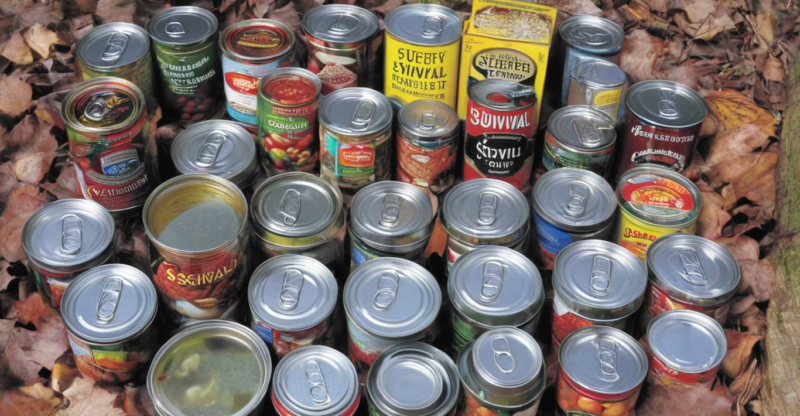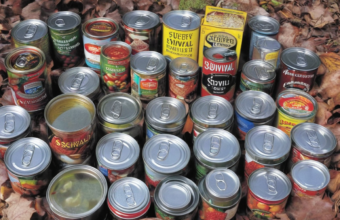What would you do if you lost everything in a disaster? – Navigating Life’s Unexpected Storms
“Imagine waking up one day to find everything you’ve worked for, everything you’ve cherished, gone in an instant. A disaster, whether natural or man-made, can wreak such havoc, leaving you with nothing but the clothes on your back.
How would you cope? Where would you even begin to pick up the pieces? These are questions we seldom ask ourselves, yet their answers hold the key to our resilience in the face of adversity.
This is your guide to surviving and eventually thriving after a disaster. We’ll explore the psychological, financial, and practical aspects of recovery, offering insights and strategies to help you rise from the ashes. Stay with us as we journey through this challenging yet enlightening topic.
How to Recover from a Total Loss?
Experiencing a total loss due to a disaster can be overwhelming, but it’s crucial not to lose hope. The first step is to ensure you and your loved ones are safe. Once safety is confirmed, contact your insurance company to report the loss. It is important to document the damage for your claim, so take pictures if you can.
Next, reach out to local disaster relief organizations. They can provide immediate support, such as food, clothing, and temporary shelter. In addition, they can guide you towards long-term recovery resources.
Creating a recovery plan is a vital part of this process. This includes finding permanent housing, replacing necessary items, and managing financial obligations. It may be beneficial to seek professional counseling to cope with the emotional trauma.
Remember to take care of your physical health during this time. Eating healthy, getting enough sleep, and regular exercise can help you manage stress.
Rebuilding after a disaster is a long process that requires patience and resilience. It’s okay to ask for help and lean on your support network. Stay connected with your community and don’t hesitate to reach out to others who have experienced similar situations – their insights can be invaluable.
While it may seem impossible at first, remember that recovery is a journey. Each step, no matter how small, brings you closer to rebuilding your life after a total loss.
What is Disaster Preparedness?
Disaster preparedness refers to measures taken to prepare for and reduce the impact of disasters. This involves forecasting and taking precautionary steps prior to an imminent threat when advance warnings are possible. The primary goal is to safeguard lives and prevent damage to assets and infrastructure.
Emergency planning is a key component of disaster preparedness. It involves developing a plan detailing how you and your family would respond in the event of a disaster. This includes knowing the types of disasters that could affect your area, having a disaster supplies kit, and knowing your evacuation routes.
Another crucial aspect is disaster risk reduction (DRR). This is the concept and practice of reducing disaster risks through systematic efforts, to analyze and manage the causal factors of disasters.
In the face of disaster, insurance can provide a financial safety net for your property. This is especially important if you live in a disaster-prone area.
– Disaster education and training is another essential element. This involves teaching individuals about disaster types and providing them with the knowledge and skills they need to survive a disaster.
Community resilience is the sustained ability of a community to withstand and recover from adversity. Having a resilient community can help minimize loss and speed up recovery time.
All these elements combined form a comprehensive approach to disaster preparedness, ensuring that when disaster strikes, you are ready to respond effectively, minimizing loss and maximizing recovery.
Can Insurance Cover All Losses?
When disaster strikes, the first question that often comes to mind is, what would you do if you lost everything? Insurance is typically the safety net many rely on, but can it truly cover all losses?
In the event of a catastrophe, insurance policies can provide financial relief for a variety of losses, including property damage, personal injury, and loss of use. However, the extent of coverage depends on the specifics of your insurance policy. Some policies may exclude certain types of disasters, such as floods or earthquakes, requiring additional coverage.
• Property Damage: Most standard policies cover the cost to repair or replace your home and other structures on your property, like sheds or fences.
• Personal Property: This covers the cost to replace or repair belongings in your home, such as furniture, electronics, and clothing.
• Loss of Use: If your home is uninhabitable due to damage, this coverage can help with additional living expenses.
It’s crucial to review your insurance policy regularly and understand its terms. A good rule of thumb is to ensure your coverage limit is enough to rebuild your home and replace your belongings. Remember, insurance is designed to help you recover, but it may not cover every loss in every disaster. It’s always wise to have a disaster preparedness plan in place, in addition to insurance, to ensure you can bounce back from a catastrophic event.
How to Cope with Emotional Trauma?
When faced with the aftermath of a disaster, it’s normal to feel overwhelmed and helpless. Emotional trauma can manifest in various ways, including anxiety, depression, and even post-traumatic stress disorder (PTSD). It’s crucial to acknowledge these emotions and seek professional help if needed.
One effective method to cope with emotional trauma is through therapy. Therapists can provide tools and techniques to help manage your feelings and thoughts. Additionally, joining a support group can provide a sense of community and understanding, helping you realize you’re not alone in your experience.
Another key aspect of coping is self-care. This includes maintaining a healthy lifestyle, getting regular exercise, and ensuring you get enough sleep. These actions can help improve your mood and energy levels, making it easier to tackle the emotional challenges you’re facing.
Furthermore, it’s essential to rebuild your life gradually. Start by focusing on basic needs like food, shelter, and clothing. Once these are secured, work towards regaining a sense of normalcy. This could involve returning to work or school, or engaging in hobbies and activities you enjoyed before the disaster.
Lastly, remember, it’s okay to grieve. Losing everything in a disaster is a significant loss, and it’s natural to feel a deep sense of sorrow. Allow yourself to feel these emotions, but don’t let them consume you. With time and support, you can recover and rebuild.
Remember, healing from emotional trauma is a journey, and it’s okay to take it one day at a time.
Where to Find Temporary Shelter?
In the unfortunate event of a disaster leading to the loss of everything, finding a temporary shelter becomes a priority. A local disaster relief agency should be your first point of contact. They provide immediate assistance and guide you towards temporary housing options.
Another option is to reach out to local community centers, churches, or schools. These places often open their doors to disaster victims and provide a safe space to stay.
If you are in a region prone to natural disasters, it’s helpful to familiarize yourself with the locations of designated disaster shelters beforehand. These facilities are equipped to accommodate large numbers of people and provide essential services.
• The American Red Cross, for instance, offers a Shelter Finder App that locates the nearest shelters during emergencies.
Government assistance programs also come into play during such times. FEMA, for example, provides Temporary Housing Assistance for eligible disaster survivors.
Lastly, reaching out to friends and family can also provide a temporary respite. They can offer a place to stay, emotional support, and help you navigate through the recovery process.
Remember, the goal is to secure a safe place to stay while you work on rebuilding and recovering from the disaster. It’s about finding hope and resilience amidst the chaos.
How to Rebuild After a Disaster?
Firstly, it is essential to assess the damage caused by the disaster. This includes evaluating the physical damage to your property and personal belongings, as well as the emotional trauma you and your family may have experienced.
Next, it is crucial to contact your insurance company as soon as possible. Provide them with a detailed inventory of lost or damaged items, along with their estimated value.
Once you have a clear understanding of your losses, start planning for rebuilding. This may involve hiring contractors, purchasing new items, and even considering relocation if the damage is too severe.
Financial assistance can come in different forms, including insurance payouts, disaster relief funds, and donations. It is important to explore all options and take advantage of any available resources.
Emotional support is equally important during this time. Reach out to friends, family, and professionals to help cope with the trauma.
Finally, consider implementing disaster preparedness measures to minimize future losses. This could include having an emergency kit, creating a disaster plan, and regularly updating your insurance policies.
Rebuilding after a disaster is a challenging process, but with the right resources and support, you can navigate through this difficult time. Remember, it’s not about replacing what was lost, but about moving forward and creating a new normal.
Who Can Provide Disaster Assistance?
Experiencing a disaster can be incredibly overwhelming, especially when you’ve lost everything. It’s crucial to know who can provide disaster assistance during these trying times. The Federal Emergency Management Agency (FEMA) is a key player in disaster response and recovery. They provide financial assistance for temporary housing, home repairs, and other disaster-related expenses.
Non-profit organizations like the American Red Cross and Salvation Army also offer immediate relief services, including food, shelter, and emotional support. Insurance companies play a significant role in disaster recovery too, providing financial aid depending on the coverage of your insurance policy.
Local community organizations and churches often step in to provide immediate aid and support. They may offer food, clothing, shelter, and other essential items. Additionally, they can be a source of emotional and mental health support.
State and local governments also have emergency services departments that coordinate disaster response and recovery efforts. They work closely with federal agencies and non-profit organizations to ensure affected individuals receive the help they need.
Disaster assistance can come from various sources, and it’s important to reach out and utilize these resources in the aftermath of a disaster. Remember, it’s okay to ask for help when you need it.
How to Protect Assets from Future Disasters?
When faced with the daunting question, “”What would you do if you lost everything in a disaster?””, the first step is to ensure the protection of your assets. This involves creating a comprehensive inventory of all your possessions. Documenting your belongings with photographs or videos can provide evidence of ownership and help in filing insurance claims.
Insurance is a crucial part of asset protection. Homeowners and renters insurance policies typically cover personal property losses, but it’s essential to understand what is covered and what isn’t. For instance, standard policies often exclude flood damage, requiring additional coverage.
Creating a disaster plan is another critical aspect of asset protection. This includes storing vital documents such as deeds, wills, and insurance policies in a safe, waterproof, and fireproof location. Digital copies of these documents should also be stored in a secure cloud-based service.
Another proactive measure is to invest in disaster-resistant home improvements. For example, installing storm shutters, reinforcing your roof, or retrofitting your home to withstand earthquakes can prevent significant damage.
Lastly, it’s crucial to have an emergency fund. This financial cushion can cover immediate expenses in the aftermath of a disaster and can be a lifeline when waiting for insurance claims to be processed.
Remember, while it’s impossible to predict when a disaster will strike, it’s entirely within your power to prepare and protect your assets.
Concluding Thoughts: Surviving and Thriving After a Disaster
In conclusion, the question, “”What would you do if you lost everything in a disaster?”” is a complex one, encompassing a variety of aspects. The key points we’ve explored, such as recovery strategies, disaster preparedness, insurance coverage, emotional trauma coping mechanisms, finding temporary shelter, rebuilding, seeking disaster assistance, and future asset protection, all contribute to a comprehensive answer.
Understanding how to recover from a total loss is crucial, as is being prepared for potential disasters. Insurance can provide some financial relief, but it may not cover all losses, making it essential to have a plan in place. Emotional support and temporary shelter are critical immediate needs after a disaster, followed by the longer-term goal of rebuilding.
Seeking disaster assistance from various organizations is also an important step. Furthermore, taking measures to protect your assets from future disasters can help prevent such catastrophic losses in the future.
As we move forward, trends such as climate change and urbanization may increase the frequency and impact of disasters, making this topic increasingly relevant. The best advice is to stay informed, be prepared, and know your resources. Remember, the human spirit is resilient, and with the right knowledge and support, we can not only survive but thrive after a disaster.
“












